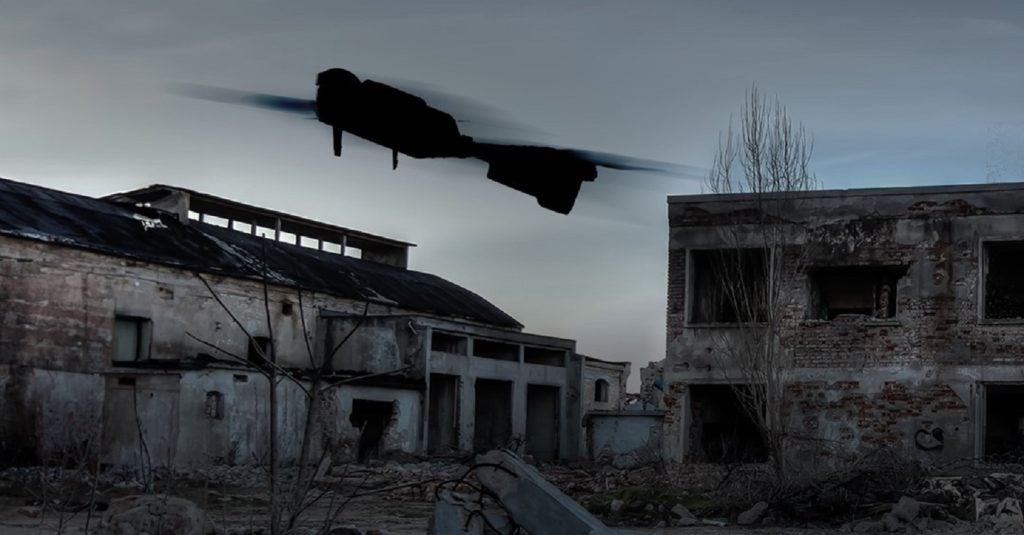

Vehicles
Several manufacturers showcased new vehicles or components at this year’s AUSA. There was a particular focus on ultra-light vehicles, which is a change from the usual emphasis on up-armoured heavy vehicles like MRAPs or armoured personnel carriers. One reason for this is the US Army’s interest in a brand-new family of ultra-light vehicles for expeditionary missions.
General Dynamics displayed its Flyer 72 vehicle, which recently went into low rate initial production (LRIP) as part of a contract with US Special Operations Command. The Flyer 72 has a top speed of 100mph, can carry up to nine combatants and be transported inside a CH-47 Chinook. Polaris Defense – known for its military quad bikes – unveiled its own ultra-light vehicle known as DAGOR, which it hopes could compete for a future US Army contract.
Boeing Defense also showcased its ‘modular’ Phantom Badger ultra-light vehicle, which for the first time was equipped with a mortar module and ammunition trailer. Like the Flyer 72 or DAGOR, the Phantom Badger is light enough to be sling loadable, air-dropped or loaded into the back of an Osprey or Chinook. Even if Phantom Badger doesn’t win a US Army contract, at least it wins the competition for best name.
Other vehicle news included an announcement by Textron Systems that it will be providing Bulgarian armed forces with ten new Commando armoured vehicles. Three vehicle types will delivered including an ambulance variant, command and control (C2) variant and a turreted variant equipped with a 40mm main gun. All the vehicles will be deployed in support of the International Security Assistance Force mission in Afghanistan.
How well do you really know your competitors?
Access the most comprehensive Company Profiles on the market, powered by GlobalData. Save hours of research. Gain competitive edge.

Thank you!
Your download email will arrive shortly
Not ready to buy yet? Download a free sample
We are confident about the unique quality of our Company Profiles. However, we want you to make the most beneficial decision for your business, so we offer a free sample that you can download by submitting the below form
By GlobalData
Vehicle components
Oshkosh Defense used AUSA to debut its newest driver assist safety systems for its successful M-ATV range of vehicles. The systems on show ranged from basic forward collision warning devices to fully autonomous vehicle operation in high-threat environments. One technology demonstrated by Oshkosh was the ‘Surround View System’ fitted to its newest Intervention variant of its M-ATV. Surround View incorporates six wide-angle cameras to give operators a ‘birds-eye view’ of the vehicle.
General Dynamics gave a glimpse into the future with a demonstration of its Multipurpose Unmanned Tactical Transport (MUTT). The small, four-wheel vehicle is designed to lighten the load for forward-deployed, dismounted units by carrying up to 300kg of equipment and supplies. General Dynamics reportedly said at AUSA that it is ready to launch full production of an electric-powered MUTT.
During the show, metal manufacturer Alcoa announced it had produced the world’s largest single-piece forged aluminium hull in collaboration with the US Army Research Laboratory. Modelling and simulations show a single-piece underbody could provide twice the protection against blasts over traditional hulls which have welded seams. The hull is now being tested by the US Army to test its durability.
Lastly, Northrop Grumman set out its solution to extend the life of the high-mobility multipurpose wheeled-vehicle (HMMWV), or Humvee, in service with the US Army and other militaries around the world. Northrop is working with Meritor Defense and Pratt & Miller Engineering to upgrade existing Humvees and restore them to their original performance and payload capabilities. The US Army has not yet committed itself to upgrading the Humvee, but Northrop has positioned itself well if the call comes.

Soldier tech and dismounted weapons
It wouldn’t be a land forces exhibition without a good helping of dismounted soldier technology. Israeli company TAR-Ideal introduced a new soldier marker which could lessen the incidence of friendly fire. Called the TL5 Pro, the personal marker can be used in infra-red mode which makes it invisible to the naked eye but visible to friendly forces using IR sensors. The marker is already in use by the Israel Defence Force and can also be used as a helicopter landing strip marker.
Raytheon announced a number of products including the latest version of its global positioning system anti-jam (GPS-AJ) capability, called Landshield. The system, according to Raytheon officials, provides the “most advanced” anti-jam capability for simultaneous L1 and L2 GPS frequencies. GPS anti-jam capabilities are becoming increasingly important as GPS jammers proliferate thanks to decreasing costs and increased effectiveness. Raytheon also unveiled a new wearable technology called Distributed Common Ground System-A Lite which provides battlefield information on a wrist-worn display.
Saab presented its latest man-portable shoulder-launched weapon system at this year’s AUSA. The next-generation Carl Gustaf M4 – which is known as the M3A1 MAAWS in the US Army – is lighter than previous variants weighing approximately 15 pounds and is compatible with future battlefield technology such as intelligent sighting systems. The M3 variant has seen extensive service with US Army Rangers and US Special Forces, so expect to see a lot of interest in the M4.
Outdoors company Rocky Brands displayed its newest military boot designed for jungle operations. With the US increasing its presence in the Pacific, there will be a huge investment in clothing designed to address the challenges presented by this environment. Rocky Brands’ newest jungle boot will be tested soon by US soldiers in Hawaii, according to company officials.

Aviation, manned and unmanned systems
Unmanned vehicles and new helicopter concepts have been prominent at this year’s show. Just before AUSA began, Sikorsky unveiled its S-97 Raider prototype which it hopes will become the future benchmark for military helicopters. The revolutionary design features a composite fuselage, a pair of coaxial rotors and a six-blade pusher propeller. This means the S-97 has a cruising speed of 253mph, double that of conventional helicopters.
Not to be outdone, Bell Helicopter displayed a mock-up of its V-280 Valor which it also hopes will find favour with US Army officials. The V-280’s design is fundamentally different from the S-97 but it is still capable of flying faster and farther than today’s helicopters. The Valor, with its huge tilt rotors, resembles a mini V-22 Osprey and will be capable of carrying up to 14 troops. Valor and Raider both represent a significant shift in future helicopter design – but which one will come out on top?
Unmanned aerial vehicles (UAVs) also featured prominently during the show, solidifying their position as an essential capability for modern armed forces. Israeli company Flying Production unveiled ‘Da Vinci’ during the expo, a multirotor micro UAV which can take-off and land autonomously and carry a 5.4kg payload. The micro UAV’s payload can include the company’s own dual electro-optic/infrared sensors called Galileo. Importantly, the entire system is man-portable giving troops vital ISR capabilities whenever it is required.
Textron Systems’ stand also displayed the Fury guided missile mounted on a Shadow M2 UAV. The Fury guided missile is designed to be an affordable way of integrating weaponry onto smaller tactical UAVs like the Shadow, rather than larger platforms like Reaper or Predator. Textron, in collaboration with Thales UK, is working closely with the US Marine Corps on requirements for the new system. It appears any UAV, no matter how big or small, could now be considered a weapons platform.
Follow Grant Turnbull on Google+


.gif)




